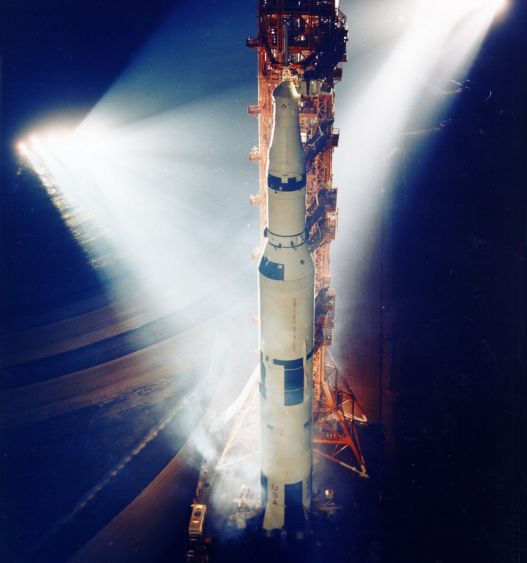The Saturn V rocket was used to launch astronauts to the moon. Image Credit: NASA
It’s exciting times for us moon landing fans as it was announced late last week that two Saturn V F-1 rocket engines had been recovered from the Atlantic Ocean. The engines, responsible for powering Apollo astronauts to the moon from 1969-72 had spent more than 40 years lying off the Cape Canaveral coastline. They were recovered in a private expedition established by Jeff Bezo.
The specs of the engines were impressive. According to NASA, a cluster of five F-1 engines (responsible for the first stage of each Saturn V lift-off) burned a mixture of liquid oxygen and kerosene fuel at more than 15 metric tons per second during its two and a half minutes of operation. Each F-1 engine had more thrust than three space shuttle main engines combined, to lift the vehicle to a height of 58 kilometres (and to a speed of 9,600 kph). At this point the F-1s would separate from the spacecraft, landing in the ocean while a further two stages of rocket burn would launch the Apollo Saturn V into space and from there to the Moon.
Interestingly, the F-1 remains the most powerful American liquid-fuel rocket engine ever developed and it is likely that a modernized and simplified version could be used in NASA’s next heavy-lift launch vehicle, the Space Launch System (SLS) rocket.
The two recovered F-1 engines are to be restored and then placed on public display.
You can read more about the F-1 Rocket Engine.


